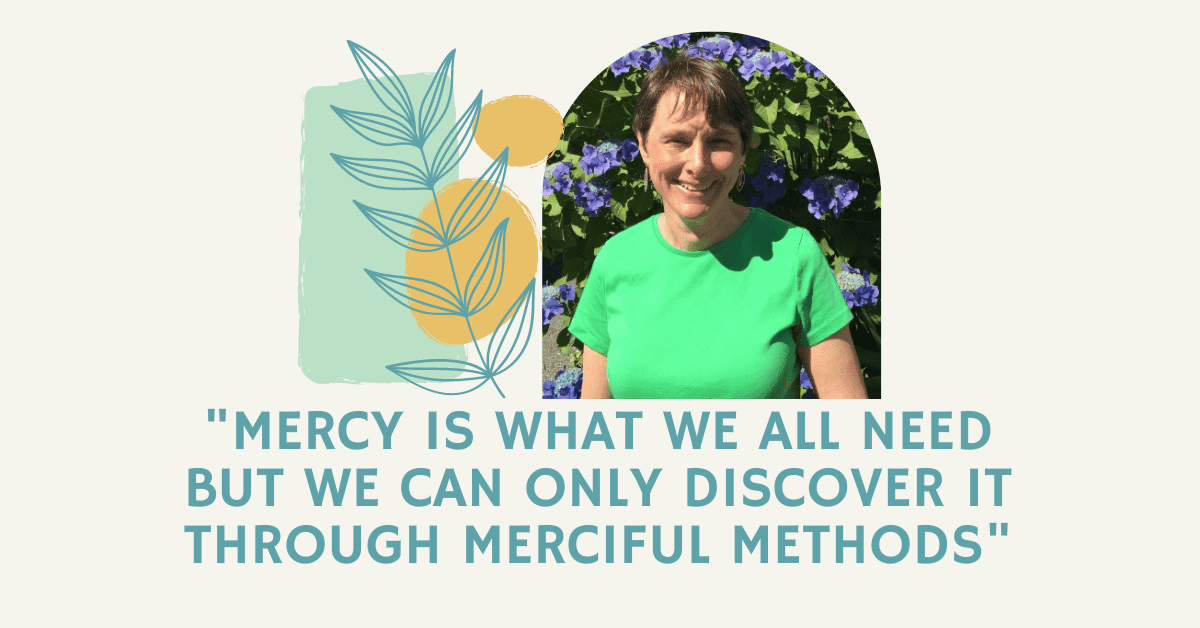During the pandemic craziness, I recognized a longing for the creek of my childhood. It had been the companionable background of daily life, the roaring call to recognize the greater forces at work in the world and a calming voice in times of trouble. It had been a connecting point with God.
SoI bought a compact, inexpensive fountain online. It was crucial that it sounded like the running water I knew. I set it up on the back patio with two chairs and some herbs. (Plants also connect me with God.) I pray morning prayer there or rest at the end of the day. I eat dinner and play games with my family as the water flows nearby. And my sense of God is heightened consciously and unconsciously once again.
Whether the pandemic made life more frantic or brought it to a screeching halt, many people recognized their deep need for reflective time.There was a great surge of online retreats, but then came a struggle. Because people were accustomed to leave home for holy experiences, time wasn’t enough; they needed sacred space as well. As Cranaleith’s program director,I heard plenty of lamenting of the inadequacies of Zoom and I encouraged people to claim a sacred space in their home for online retreats.
In her creative way, the Spirit has reminded us that our homes are sacred. She invites us to be more deliberate about the stay-at-home connection points. Americans have made sacred space a top design concern, as shown in a recent study by the American Society of Interior Designers. However, most people are not seeking professional input. And why should they? Allthey need is to name what connects them to the sacred.
Sacred space in the home is not a recent invention. Think of family shrines outside Hindu homes or home altars to the ancestors in China and Mexico or St. Francis and Blessed Mother statues in Catholic Christian flower beds. My mother adorned our kitchen table every May and October with simple bouquets and her Hummel statue of Mary and Baby Jesus to focus us during our family rosaries.
To create your own sacred space, consider the following:
- Is this to be your own space or shared? If the latter, bring those who live with you live into the process.
- When have you felt closest to the Divine? It could have been worshipping with a religious community or being in nature. Maybe it was a dramatic life event. Perhaps somewhere you felt safe or loved or happy.
- What were key elements in that experience? We connect with the divine through our senses, in people and things. Was there light or darkness, a scene or a face, a sound, a touch, an action, the wind or water?
- Where would you like to set up your sacred space? It can be as compact as a small table or a shelf corner. It can be a chair or a whole room. What is essential for the space? Light?Quiet? Comfort? Color?
- What items will you place in your sacred space to help you engage with the holy? These may be things that remind you of or let you experience again your earlier connection with the divine, e.g. candles, sunlight, fire, food, a memento, a sacred symbol from your religious tradition or a picture of someone you admire or love deeply. It may be helpful to choose things that connect you to the holy through Time (something people have used for years) and things that connect you to the holy through Space (something from the natural world).
- Remember you can always change it! When the cold weather comes, I will drain my fountain and come inside. That’s okay. I have a window I like to pray at and my kitchen table is always a holy place.
- How can you K.I.S.S.your sacred space? (Keep It Simple, Sweetheart!) A lot of stuff or expensive stuff is no guarantee of a “holier” experience. A simple space slows down your thoughts as well as your body. When we rest, we hear God speak. The vastness of God is available in each little thing, in each brief moment.
Blessings on the construction of your own sacred space!
What does your sacred space look like? Describe it in the comments below, email a photo at info@cranaleith.org or tag us @cranaleith on social media, so we can share a photo of your space in a future newsletter!



